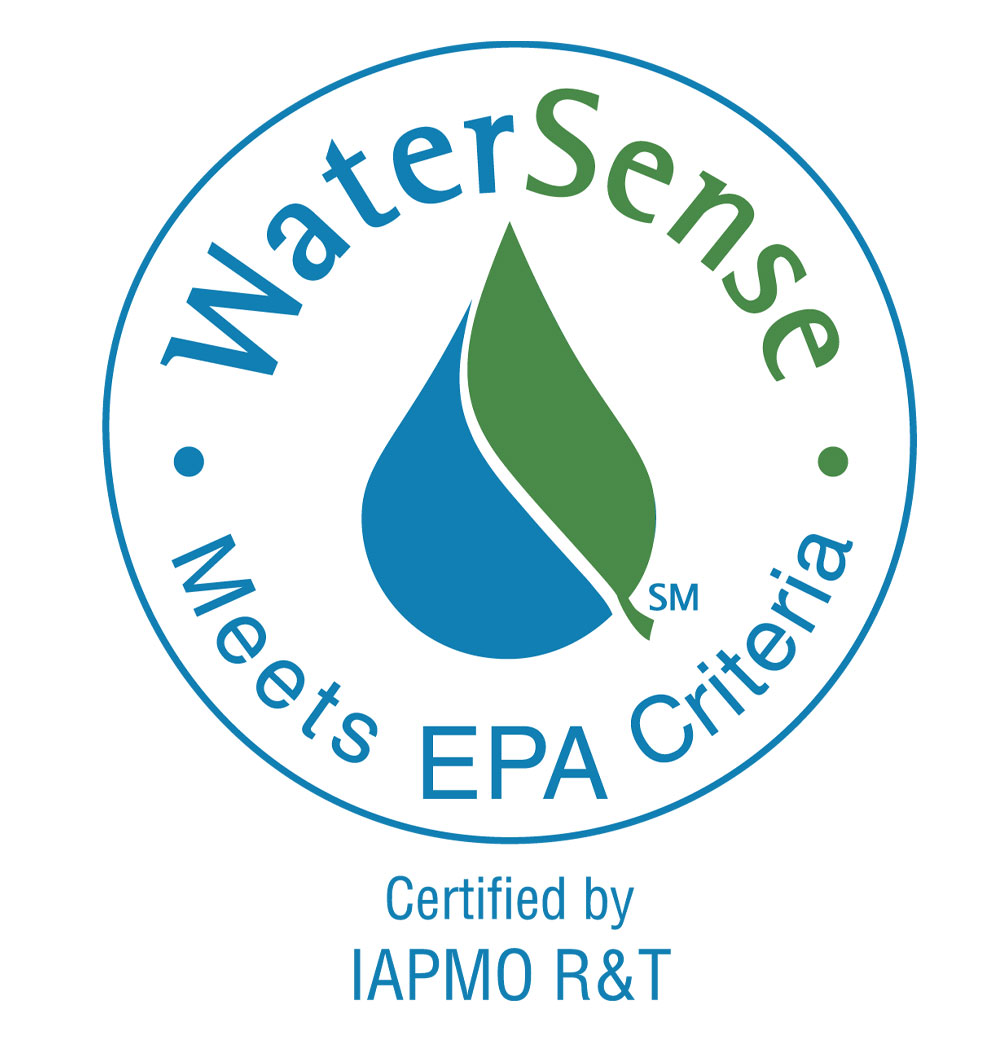Showering is one of the leading ways we use water in the home, accounting for nearly 17 percent of residential indoor water use—for the average family, that adds up to nearly 40 gallons per day. That’s nearly 1.2 trillion gallons of water used in the United States annually just for showering, or enough to supply the water needs of New York and New Jersey for a year! By retrofitting your shower with a WaterSense labeled showerhead, you can save a considerable amount of this water.
Shower with Power
Did you know that standard showerheads use 2.5 gallons of water per minute (gpm)? Water-saving showerheads that earn the WaterSense label must demonstrate that they use no more than 2.0 gpm. The WaterSense label also ensures that these products provide a satisfactory shower that is equal to or better than conventional showerheads on the market. EPA worked with a variety of stakeholders—including consumers who tested various showerheads—to develop criteria for water coverage and spray intensity. All products bearing the WaterSense label—including water–efficient showerheads—must be independently certified to ensure they meet EPA water efficiency and performance criteria.
Whether you are replacing an older, inefficient showerhead or simply looking for ways to reduce water use and utility bills in your home, look for the WaterSense label on showerheads along with faucets, faucet accessories, and toilets to help you identify models that save water and perform well. In many areas, utilities offer rebates and vouchers that can lower the price.
Download WaterSense Labeled Showerhead Factsheet
WaterSense Savings
The average family could save 2,700 gallons per year by installing WaterSense labeled showerheads. Since these water savings will reduce demands on water heaters, they will also save energy. In fact, the average family could save more than 330 kilowatt hours of electricity annually, enough to power a house for 11 days.
On a national scale, if every home in the United States installed WaterSense labeled showerheads, we could save more than $2.9 billion in water utility bills and more than 260 billion gallons of water annually. In addition, we could avoid about $2.5 billion in energy costs for heating water.
While water savings are great, the decision to keep a water-efficient showerhead is tied to the user experience. Are they comfortable in the water spray both in pressure and coverage, does enough water come out to thoroughly rinse shampoo out of long or curly hair without extending the time spend running the shower? When more water-efficient plumbing products first entered the market, some were found to have inferior performance compared to standard products. As a result, these products were not widely adopted, limiting their overall water savings potential. Learning from this experience, WaterSense includes performance criteria for all products it labels, allowing the program to distinguish water-efficient products that perform as well or better than their standard counterparts. When consumers purchase a WaterSense labeled product, they can be confident that it will perform well and save water. WaterSense evaluates showerhead performance through three key performance metrics:
• Spray force equals or exceeds 2.0 ounces-force (ozf) [0.56 Newtons (N)] for showers with perpendicular spray or 1.4 ounces-force (ozf) [0.40 N)] for rain showers. The new test protocol and performance criteria for rain showers are mathematically equivalent to the protocol and criteria currently used to test standard fixed showerheads; this update simply serves to equalize requirements for the two types of showerheads and reflect their typical mounting configurations.
• To satisfy the spray coverage criteria, the total combined maximum volume of water collected in the 2- and 4-inch annular rings must not exceed 75 percent of the total volume of water collected. This ensures that the showerhead spray coverage is not too narrow. Additionally, the total combined minimum volume of water collected in the 2-, 4-, and 6-inch annual rings must not be less than 25 percent of the total volume collected, indicating that the showerhead does not provide spray coverage with a hollow center. The spray coverage criteria are intended to ensure that water flow is distributed in a way consistent with user preference. The criteria contained in the specification were crafted to identify and disqualify showerheads with sprays that are too wide or too narrow.
• Minimum flow requirements ensure that WaterSense labeled showerheads will meet consumer performance expectations by meeting or exceeding minimum flow rates, even in households with low water pressure. This showerhead feature is known as pressure compensation. To earn the WaterSense label, a showerhead’s minimum flow rate is required to be greater than 60 percent of the maximum flow rate when tested at a flowing pressure of 20 ± 1 psi, and greater than 75 percent of the maximum flow rate when tested at flowing pressures of 45 and 80 ± 1 psi. WaterSense requires testing at 45 psi so consumers can match showerheads with compatible automatic-compensating mixing valves, which are rated at 45 psi. The 20 ± 1 and 80 ± 1 psi requirements are intended to evaluate flow rate under minimum and maximum flowing pressures.
Manufacturers that produce showerheads meeting EPA’s efficiency and performance criteria can apply to have their products certified by companies such as IAPMO R&T to earn the WaterSense label. Before submitting products for testing, manufacturers must have a signed WaterSense partnership agreement with EPA.
From the US EPA website

Anish Desai
Last modified: July 14, 2023

